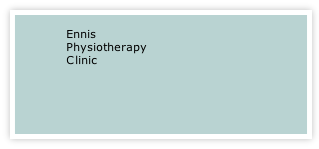




Mon - Fri 9.30am - 8.30pm


3A Barrack Close, Barrack St., Ennis, Co. Clare V95 X437

065 6840757
Signs + Symptoms of Concussion
Graduated Return to Play (GRTP)
Disclaimer
Someone who may be concussed should immediately seek medical attention or attend the Emergency Department
Concussion is a type of minor head injury, involving minor brain trauma (TBI). Concussion has transient signs + symptoms that can include headaches, impaired concentration, memory, balance and coordination.
Concussion can happen in a variety of ways - falls, car accidents, sports - causing sudden movement of the head (and brain within the skull).
There may not be obvious signs and symptoms immediately after the injury but some may appear in the days and months afterwards.
Some concussions result in loss of consciousness (LOC) but most do not. It's possible to be concussed and not realise it. People normally recover fully following a concussion.
Concussion presents with a range of signs + symptoms, depending on severity. But most are minor.
Concussions can be graded as being:
- Mild (grade 1)
- Moderate (grade 2)
- Severe (grade 3) - includes LOC,
The signs and symptoms can be subtle and may last for days, weeks or even longer.
People who show the signs + symptoms listed below, or simply say that they just “don’t feel right” after a blow to the head may have a concussion They should be monitored carefully + if they have LOC they should seek medical attention.
- vestibular (balance issues);
- ocular (vision problems);
- Mood
- anxiety,
- migraine headaches, and
- cervical (problems with the neck).
The goal of treatment after concussion is to effectively manage your symptoms. If signs and symptoms are worsening you should attend A+E or to your GP
These are things that other people can observe or see in the injured person. The ‘injured’ person may exhibit some or all of the following. They…
- Lose consciousness (LOC)
- Can’t recall events prior to or after a hit or fall.
- Appear dazed or stunned.
- Vomiting
- Forget an instruction, are confused about an assignment or position, or are unsure of the game, score, or who the opponent is.
- Slurred speech
- Move clumsily.
- Answer questions slowly.
- Have lost consciousness (even briefly).
- Show mood, behaviour, or personality changes.

Concussion Signs
Types of Concussion
This consensus document sets out ‘11 Rs’ of SRC management. The sections are: Recognise; Remove; Re-evaluate; Rest; Rehabilitation; Refer; Recover; Return to sport; Reconsider; Residual effects; Risk reduction.
This statement should be considered alongside the Concussion Recognition Tool (CRT5), the Sports Concussion Assessment Tool (SCAT5) or the Child SCAT5.
The 5th Concussion Consensus Statement
Sport Related Concussion (SRC)
The Glasgow Coma Scale (GCS) is used as a measure of the level of consciousness of a person who has had a head injury (including concussion).
The scale uses 3 measures:
- eye-opening,
- verbal response (i.e. speaking) and
- responsiveness of the body (i.e. to pain).
The total score varies between 15 (normal consciousness) and (severe coma). Different scales are used for children, dementia / learning disability etc.
Glasgow Coma Scale
Assessment + Management of Concussion
These are things that the ‘injured’ person complains of or reports. They may report simply ‘not feeling right’.
In most people, symptoms occur within the first seven to 10 days and go away within three months.
Concussion symptoms fit into four categories:
- Thinking and remembering.
- Physical.
- Emotional and mood.
- Sleep.
They may complain of….
- Headache or “pressure” in head
- Loss of memory – especially of the impact / event
- Being confused
- Nausea or vomiting.
- Balance problems or dizziness
- double or blurry vision. ‘Seeing stars’
- Being bothered by light or noise.
- Ringing in the ears
- Feeling sluggish, fatigued, hazy, foggy, or groggy
- Being confused, or of impaired concentration or memory problems
- Sleep disturbances
- Psychological adjustment problems and depression
- Disorders of taste and smell
- Just not “feeling right,” or “feeling down”.
Concussion Symptoms
Symptoms in Children
Head trauma is common in children but concussions can be difficult to recognise in infants and toddlers because they can't describe how they feel. Concussion clues may include:
- Appearin
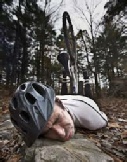 g dazed
g dazed - Listlessness and tiring easily
- Irritability and crankiness
- Loss of balance and unsteady walking
- Crying excessively
- Change in eating or sleeping patterns
- Lack of interest in favourite toys
The Maddock’s questions are used for assessing orientation in time and place in possible concussion / head injury. The SCAT (Sport Concussion Assessment Tool) includes the following modified Maddock’s questions in the pitch side assessment. The Maddock’s questions should be preceded with the preface: "I am going to ask you a few questions, please listen carefully and give your best effort."
- At what venue are we today?
- Which half is it now?
- Who scored last in this match?
- What did you play last week?
- Did your team win the last game?
The Maddock’s questions are one part of the assessment of possible concussion on the side line.
If an athlete answers all the Maddock’s questions correctly then the likelihood that he is suffering from concussion is low
Because children under the age of 13 do suffer concussion and respond to questions differently, a child aged 5 to 12 years should be asked four simple questions to determine orientation to time and place:
- Where are we now?
- Is before or after lunch?
- What did you have last lesson/class?
- What is your teacher's name
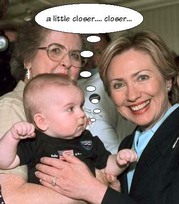
Maddock’s Questions
There is a distinction between the way concussed amateur and professional players are treated.
For instance World Rugby advocates a ‘Recognise+ Remove” Policy for amateurs and the ‘Head Injury Assessment (HIA)’ protocol for the elite game. Other sports produce similar type of protocols for their sports with slight variations i.e. FIFA, GAA etc
World Rugby’s‘Recognise and Remove’ 6 ‘R’s
- Recognise -
Know the signs and symptoms of a concussion so you understand when an athlete might have a concussion.
- Remove -
If an athlete has a concussion, or even a suspected concussion, he or she must be removed from play immediately.
- Refer -
The player should be referred immediately to a qualified healthcare professional who is trained in evaluating and treating concussions.
- Rest -
Players must rest from exercise until symptom-free and then start a Graduated Return to Play. - Slower for children and adolescents.
- Recover -
Full recovery from the effects of a concussion is required before return to play is authorized. This includes being symptom-free.
- Return -
For a safe return to playa player must be symptom-free and cleared to play in writing by a qualified healthcare professional, The player must complete the GRTP.
Graduated Return to Play (GRTP)
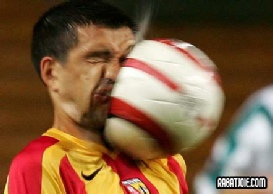
In Elite level games (Professional + Test level) a player who requires an HIA:
- Leaves the field of play; and.
- Is temporarily replaced
- The game cannot restart until the player who requires an HIA has been temporarily replaced.
The HIA is a series of checks used to determine
- whether a player is concussed and
- whether they may return to the field of play.
The Head Injury Assessment (HIA) Protocol is a three-stage process.
- Stage 1 – game day, off field assessment using the HIA1 Form
- Stage 2 – post-game, same day assessment using HIA2 Form
- Stage 3 – 36-48 hour post-injury assessment using HIA3 Form.
Players displaying obvious on-pitch signs of concussion must be immediately and permanently removed from play, without further assessment.
If not clear on-pitch players must undergo an off-field assessment (HIA1) and cannot return for 10 minutes.
The off-field HIA1 screen has four components:
- 12 immediate and permanent removal criteria (known as Criteria 1 indications) AND
- an off-field screening tool AND
- pitch-side video review AND
- clinical evaluation by the attending doctor
Any player entered into the HIA protocol must undergo another evaluation within three hours (HIA2) later that day and 36-48 hours post injury (after 2 nights rest) must be assessed again (HIA3). This screening will identify any late concussion.
Video review is used throughout the HIA protocol.
Elite Player (HIA)
Head Injury Assessment
In Soccer the FA in the UK have produced a guidance document for dealing with concussed players and this includes guidance on Graduated Return To Play in both standard care (amateur game), and in enhanced care circumstances (professional game) where significant medical and paramedical professional are available to monitor the return to play over a shortened time frame.
Minor Brain Injury 13-15/15
Moderate Brain Injury 9-12/15
Severe Brain Injury 3-8/15
|
Eyes |
|
|
Spontaneous |
4 |
|
To Sound |
3 |
|
To Pressure |
2 |
|
None |
1 |
|
Verbal |
|
|
Orientated |
5 |
|
Confused |
4 |
|
Words |
3 |
|
Sounds |
2 |
|
None |
1 |
|
Motor |
|
|
Obey Commands |
6 |
|
Localising |
5 |
|
Normal Flexion |
4 |
|
Abnormal Flexion |
3 |
|
Extension |
2 |
|
None |
1 |
Glasgow Coma Scale Pupils Score (GCS-P)
The GCS Pupils Score (GCS-P) combines GCS Score and the pupil reaction which indicates brain stem dysfunction.
The Pupil Reactivity Score reflects loss of pupil reactivity to light as follows.
The GCS-P is calculated by subtracting the Pupil Reactivity Score (PRS) from the Glasgow Coma Scale
CS-P = GCS - PRS
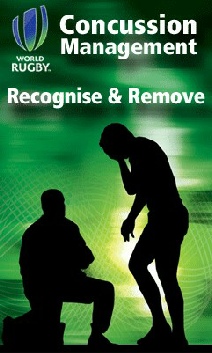
|
Unreactive to Light |
Pupil Reactivity Score |
|
Both Pupils |
2 |
|
One Pupil |
1 |
|
Neither Pupil |
0 |
| Health+Safety Services |
| Sports Clubs+Teams Services |
| Standing Posture |
| Sitting Posture |
| Childhood Posture |
| Using Portable Devices |
| Normal Walking |
| Running |
| Running Drills Videos |
| Muscle Energetics |
| General Fitness |
| Losing Body Weight |
| Gaining Body Weight |
| Weight Loss Programmes |
| Start to Run |
| Start to Swim |
| Start Cycling |
| Start Nordic Waliking |
| Rehab of Tensdons |
| Loading of Tendons |
| Non Specific LBP |
| Posture |
| Intervertebral Disc |
| LBP Treatment |
| Non Specific Neck Pain |
| Neck Care Advice |
| Hamstring Strain |
| Ankle Sprain |
| ACL Injury |
| Joint Replacement |
| Shoulder Dislocation |
| Tennis Elbow |
| Wrist fracture |
| Fractured Knuckle |
| Selecting a Racquet |
| Racquet Grip Size |
| Racuet Sport Injuries |
| Training for Racquet Sports |
| Ski + Board Injuries |
| Injury Videos |
| Injury Prevention |
| Preventing Injury in Musicians |
| Irish Dancing |
| Preventing Dance Injury |